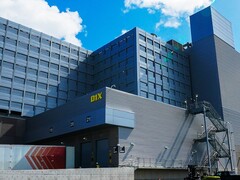Intel has notified Oregon authorities that it will eliminate 2,392 positions in the state by mid-July, expanding earlier filings that listed just over 500 cuts. The move is part of a broader cost-reduction drive under new chief executive Lip-Bu Tan, who is responding to falling sales and persistent manufacturing setbacks.
Oregon hosts Intel’s largest global site, with about 20,000 employees. The semiconductor sector pays an average of roughly $180,000 a year in the state, meaning job losses of this scale are expected to ripple through local businesses and reduce income-tax revenue. State economist Carl Riccadonna has already warned lawmakers of a slowing labor market.
Intel’s competitive challenges date back nearly a decade, when delays in process technology ceded leadership to TSMC. Rivals such as AMD, Nvidia, and Apple now rely on TSMC’s advanced nodes, while Intel struggles to regain ground and remains largely absent from booming markets like artificial intelligence training chips. “On training, I think it is too late for us,” Tan told employees, adding that Nvidia’s dominance is “too strong.”
The current workforce reduction targets all levels but is especially pronounced in Intel Foundry, the manufacturing and R&D arm, where about one in five roles will disappear. Technicians and process engineers account for many of the cuts, though roughly eight percent of those laid off hold managerial titles. Outside manufacturing, Intel has closed its automotive group and outsourced most marketing functions to Accenture.
Laid-off workers will receive 13 weeks of base pay plus 1.5 weeks for every year of service, along with a year of healthcare coverage. While Intel still enjoys more than $300 million in annual tax incentives from Oregon, its diminished revenues and shifting priorities leave the long-term scale of its Pacific Northwest footprint uncertain.
Source(s)
The Oregonian (in English)
















